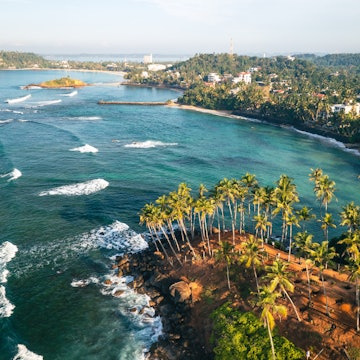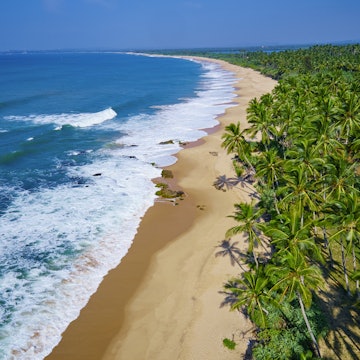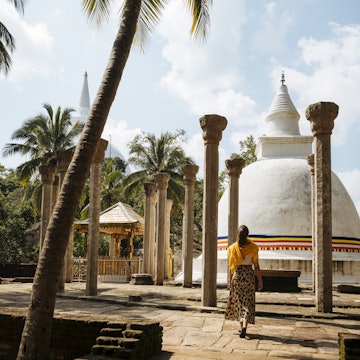

Ella Rock from Little Adam's Peak. Michael Roberts/Getty Images
Surrounded by glimmering seas and with jungles rolling down its hilly heart, Sri Lanka is a pearl in the Indian Ocean. It’s easy to see why it leaves everyone from transient backpackers to Hollywood A-listers breathlessly boasting of their itineraries on social media.
But with no infrastructure to support mass tourism, Sri Lanka hovers on the brink of overtourism, and local laws to protect the people and wildlife of this teardrop-shaped island are not yet strong enough to avert a looming crisis.
By learning the etiquette and customs, and respecting Sri Lanka’s laws, even when they are not enforced, travelers can help regenerate communities without erasing all the things that make Sri Lanka unique. Here are a few tips to make your journey a force for good.
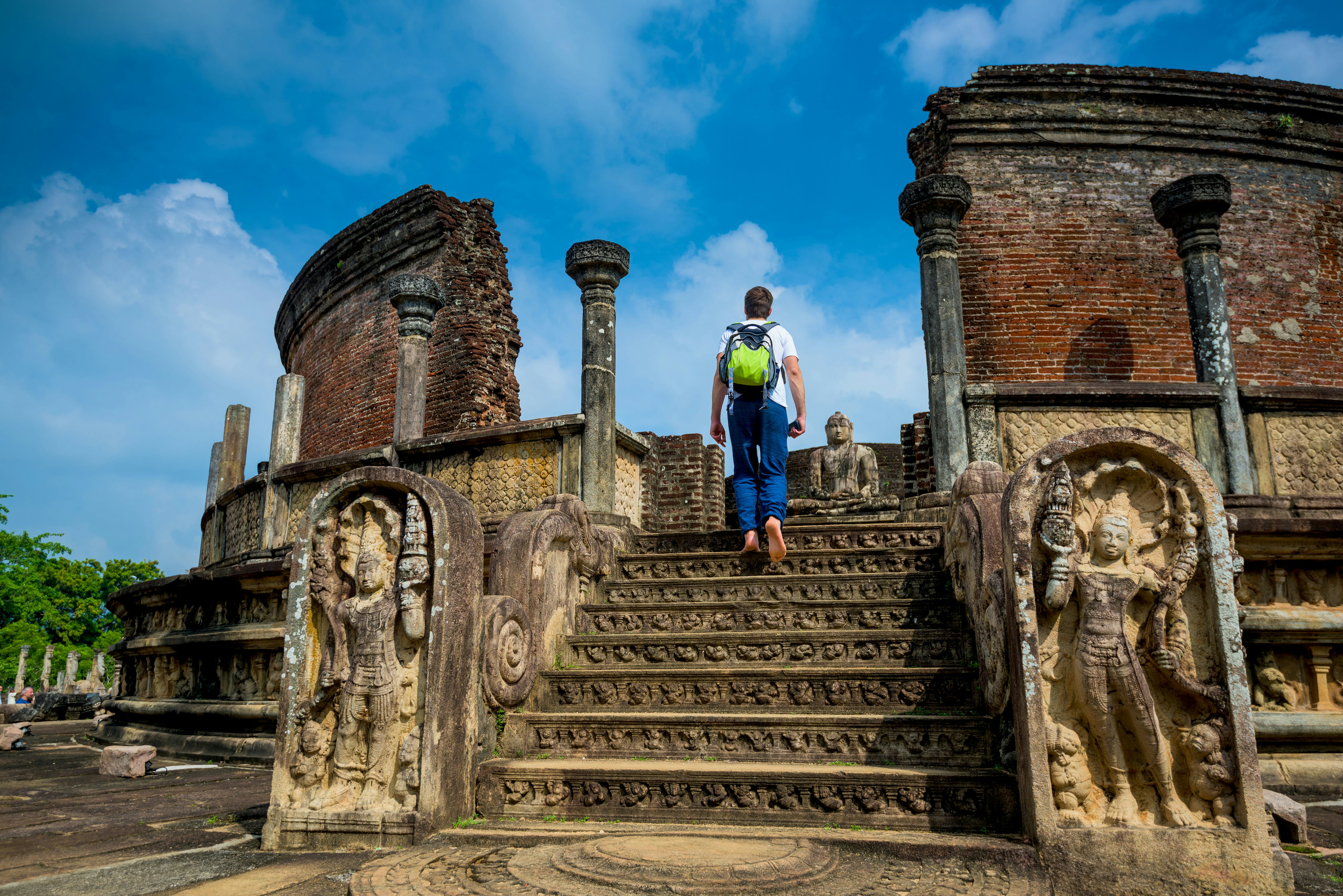
At Sri Lanka’s landmarks…
1. Don’t photograph poverty. The success of the Pekoe Trail has brought mass tourism to Sri Lanka’s most vulnerable communities: people living inside tea estates. Most of the hiking trails pass homes and places of worship, opening up personal moments of this community to the world. Respect people’s privacy as you enjoy the scenery.
2. Do support charities such as the Tea Leaf Trust and the T.E.A. Project, which work with people living on tea estates. They are Sri Lanka’s most marginalized community and live with little or no access to clean water, sanitation and education. These charities not only raise awareness of the issues affecting the community, which many Sri Lankans remain oblivious to, but also design pathways out through education and employment opportunities.
3. Don’t climb Adam’s Peak between the full moons in December and April, which is the duration of the pilgrimage to the mountain. The steep 5km (3-mile) climb from Hatton, which takes between three and five hours, is the preferred route of the pilgrims. To ease congestion, climb in May, when weather conditions remain favorable, and start in Ratnapura. At up to 10 hours for the roughly 15km (9-mile) trek, it takes longer but is not as steep.

4. Do book a guide for the eight UNESCO World Heritage Sites in Sri Lanka: Anuradhapura, Rangiri Dambulla Cave Temple, Polonnaruwa, Sigiriya, Kandy, Galle, the Sinharaja Forest Reserve and the Central Highlands. While you can do self-guided tours, UNESCO-certified, multilingual guides or National Tourist Guides have in-depth experience. They undergo a 12-month training program authorized by Sri Lanka Tourism and are experts in these important heritage sites. They can be booked at the entrances and ticket offices.
5. Don’t treat places of worship like tourist sites. Remove footwear before entering temples and kovils (Hindu temples). Both men and women should cover their legs and shoulders; the only exception is at Nallur Kandaswamy Kovil in Jaffna, where men are required to remove their shirts before entering the building.
6. Don’t take pictures inside religious spaces. Selfies with your back to statues, altars or sacred trees in particular are disrespectful. Most places allow you to take as many pictures (and videos) as you like outside. Hushed tones, low voices or silence are best inside.
7. Do take cues from other people inside Buddhist temples, where monks are treated with great respect. Walking in front of or sitting at the same level as a monk is not respectful. If they are walking behind you, move aside to make space for them to pass. If a monk is seated, sit on a lower seat or on the floor. A seat or chair covered in a white sheet is usually reserved for a monk. It represents their elevated status in the earthly and spiritual realm. Sitting on this seat is deeply offensive.
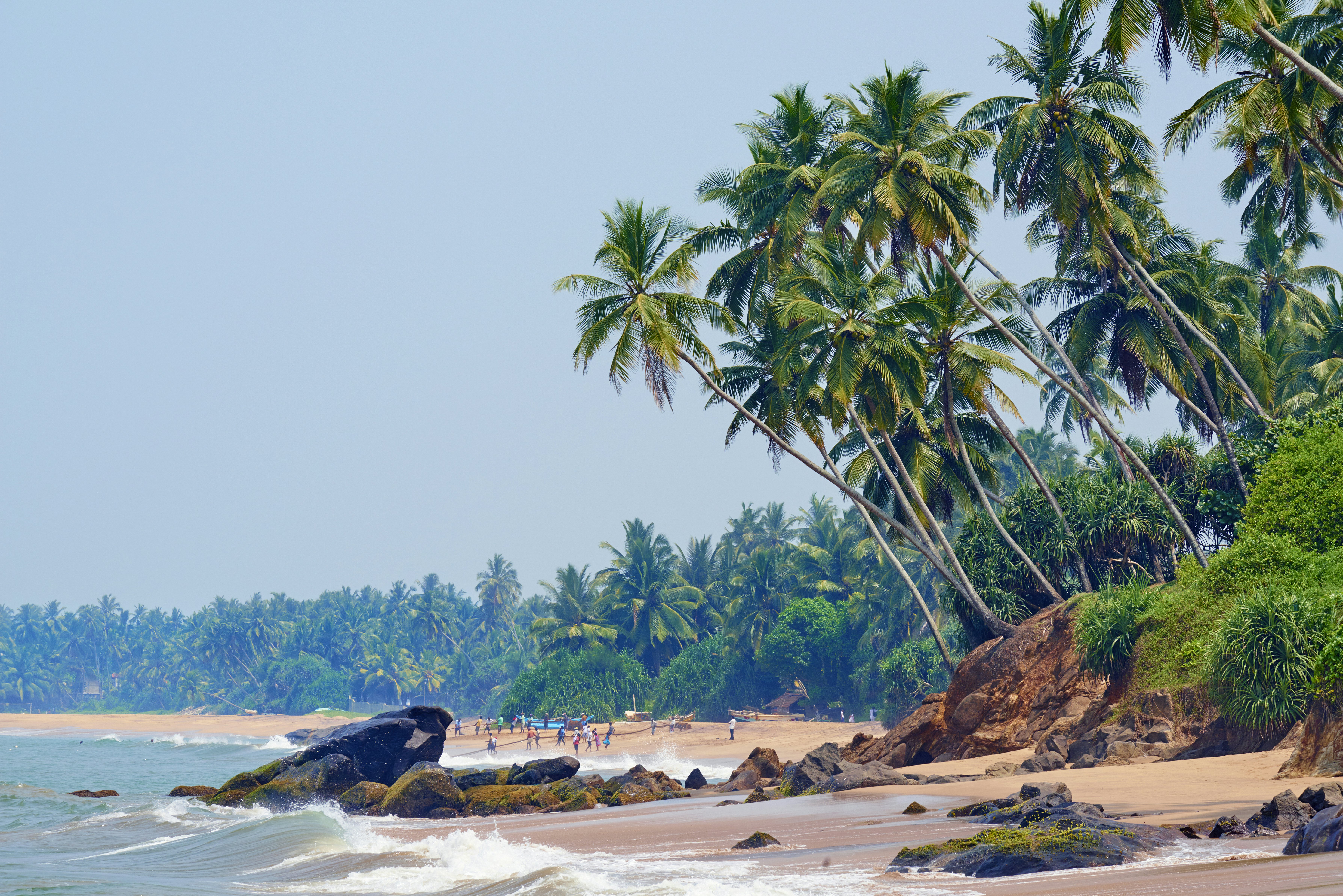
At beaches…
8. Do take care when swimming or surfing in the sea. Public beaches do not have lifeguards, and you’re possibly a good distance away from the nearest hospital. Sri Lanka does not have a robust emergency response system, and there is no mandatory first-aid training in workplaces, making travel insurance essential before coming to the island.
9. Don’t go whale watching. Once an exciting part of visiting Sri Lanka, the distinct blue whale population along the southern coast has seen an alarming decline due to environmental and human impact. Experts believe that boats chasing after the few that remain will only worsen the issue.
10. Don’t touch turtles coming out of the sea. Similarly, experiences that let visitors release baby turtles that were hatched in tanks do not support conservation. Baby turtles must reach the sea after they hatch with little human intervention. Supporting these ventures threatens their survival.
11. Don’t frequent businesses and restaurants set up by foreign travelers on tourist visas; instead, head to Sri Lankan-owned shops. It is the only opportunity for coastal communities to benefit from tourism. You can also rent bikes, surfboards and other equipment from them.
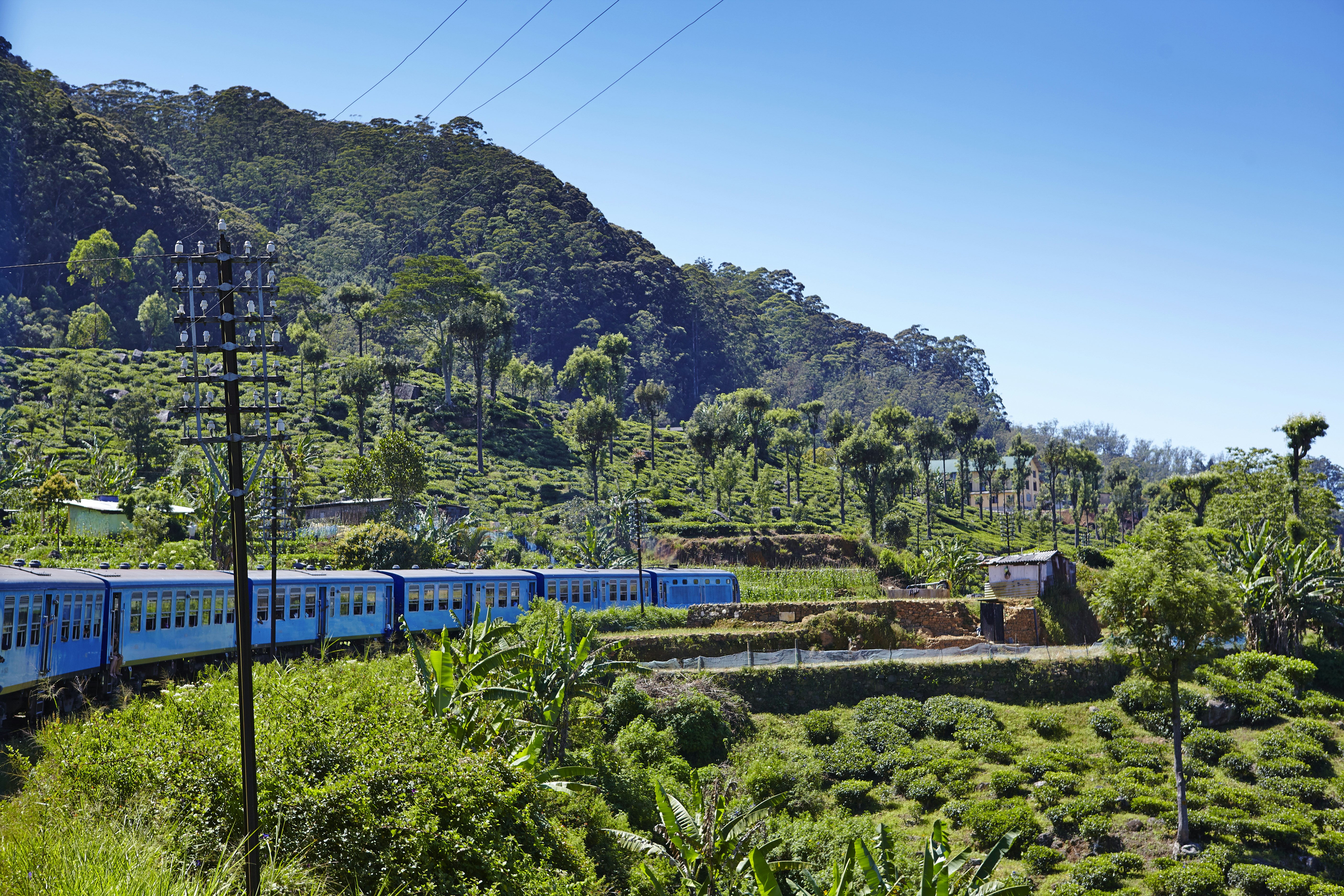
On public transportation…
12. Don’t ride crowded public trains. Social media has landed Sri Lankan rail journeys on many bucket lists. However, these trains were never meant for tourists and instead serve older people and the poorest communities, who use them daily to get around. For popular routes such as Kandy to Ella, try the Ella Odyssey. This tourist-friendly train, with wider windows and scenic stops along the way, runs from Colombo to Badulla through Ella.
13. Don’t hang off trains for pictures at any speed. The foothold is slippery, and trees, lampposts and tunnels appear without warning. Each month, travelers doing this have serious injuries, and there have even been deaths.
14. Don’t drive tuk tuks. To drive in Sri Lanka, visitors must have a valid driving license from their country of residence, an international driving license that covers three-wheeled vehicles and a temporary license, which can be obtained through a rental company for an additional fee. Tuk tuks are only safe when driven by a licensed driver who can navigate Sri Lanka’s busy roads. Driving tuk tuks off road is not recommended.
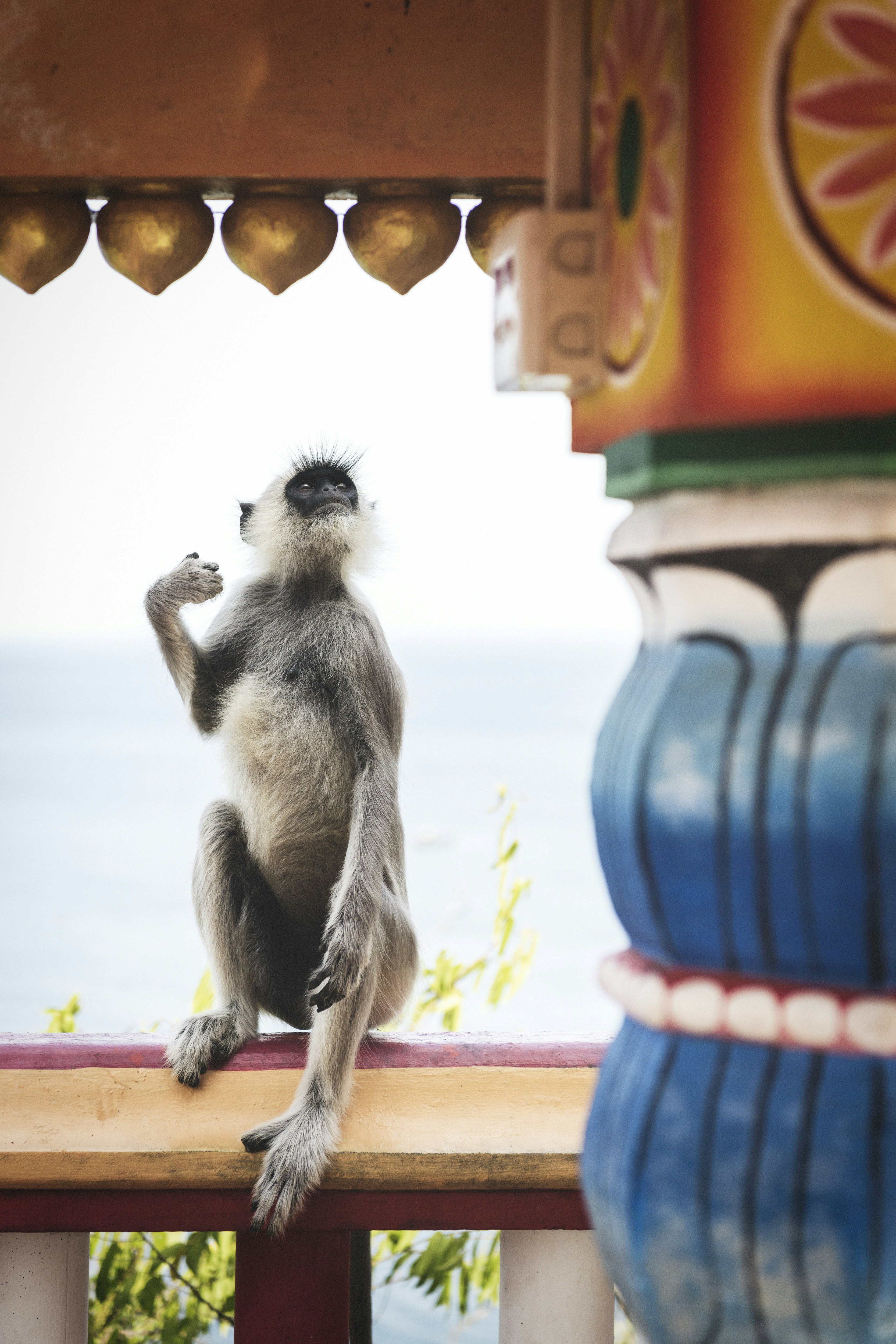
During encounters with wildlife…
15. Don’t feed wild animals. Giving an elephant a banana may seem harmless, but wild animals regarding humans as a source of food is the main cause of human-animal conflict in Sri Lanka. This threat too often ends with the animal being killed. Monkeys appear less threatening or even cute in urban settings, but they are still wild and snatch food, hats and mobile phones out of your hands – a good reason to keep your distance from them!
16. Don’t step outside vehicles when wild animals are around. National parks have designated safe areas where you can eat and use restrooms. However, roads around national parks cut through ancient elephant paths, which animals still roam through. It is magical to watch a herd of elephants cross a road but only do so from the safety of your vehicle. Elephants protect their young fiercely and will retaliate at the slightest hint of a threat to a calf.
On the street and in public spaces…
17. Do avoid PDA, particularly around children and older adults. Sri Lanka is a conservative country. You may notice that men and women sit apart in public for the same reason.
18. Do expect to have your bags searched or put through a scanner before entering hotels, monuments and public buildings. While guards are unlikely to confiscate items, spaces such as museums may hold on to flammable sprays or sharp objects, which can be collected as you leave.
19. Do dress modestly. It is associated with respect and applies to both men and women. Carrying a scarf, which can be used for covering shoulders or tying around the waist to cover legs, is a great idea.
20. Don’t drink on Poya Day. The full moon day of each month is an islandwide Buddhist holiday known as Poya, and most businesses close out of respect. Alcohol is not served or sold anywhere. Loud parties and drinking offend small communities that normally spend the day and evening at their local temple.
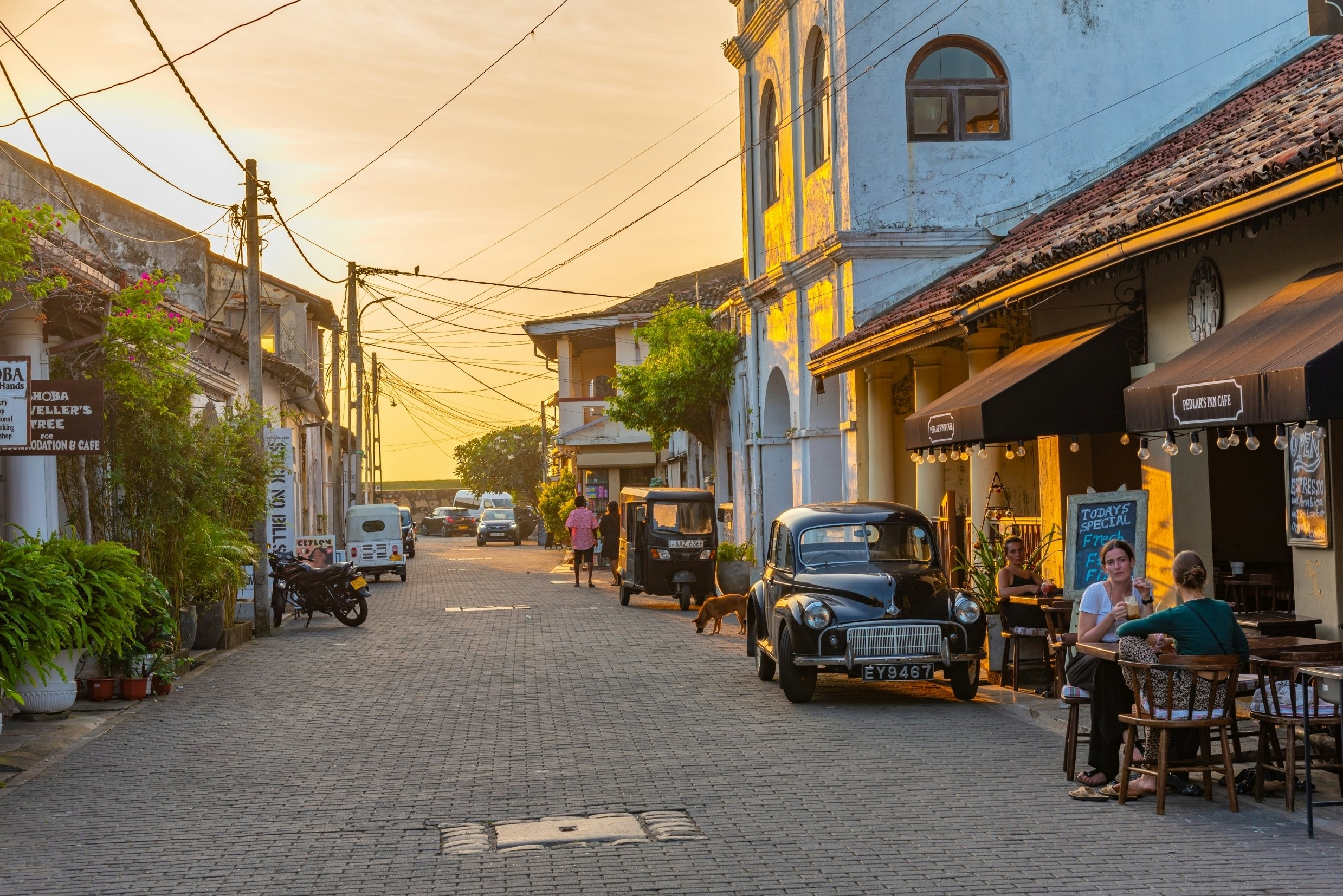
When ordering food…
21. Do be patient when ordering food. The pace of life is slower here, and food is rarely precooked. Juice is squeezed fresh, tea is brewed longer, and your food is cooked after you place the order; even fast food arrives slower. So expect to wait, whether it is just a cup of tea or full meal.
22. Do inform restaurants and cafes of allergies before you eat anything. It is not customary to check dietary requirements before food is served, especially at small, rural or roadside spots. If you cannot be certain, it is best not to take risks with severe allergies.
23. Do eat with your right hand. Sri Lankans love to see travelers try local customs. Most places will have a sink for washing hands before and after eating. Extra points if you clear your own plate after a meal. In rural places, making an older person clear your plate is insensitive – even if it is their job.










